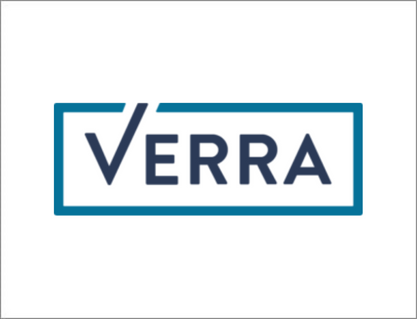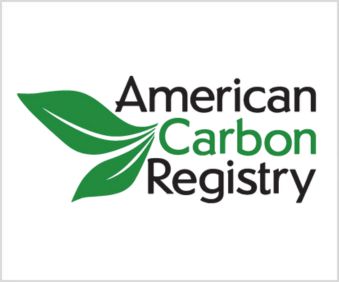California-Quebec Cap-and-Trade
Solutions for North America’s largest Cap-and-Trade Program
The Quebec-California carbon trading market is the largest in North America and represents a joint effort to incentivize corporations to adopt new technologies and encourage consumers to change their behavior to decarbonize the environment. Contact our experts to learn more about our products & solutions for California-Quebec Cap-and-Trade, or to become a registered carbon trading partner.
Quebec Cap-and-Trade Program
Quebec launched its Cap-and-Trade market for greenhouse gas (GHG) emissions in 2013 and then formed a landmark partnership with the state of California in 2014 which effectively linked their trading programs.
The system covers fossil fuel combustion and industrial emissions in power, buildings, transport and industry. The resulting carbon trading market is now the largest in North America, and has generated revenue of over $7.3 billion in revenue for Québec. These proceeds are reinvested into the provincial economy through financial support to Quebec companies, municipalities, institutions and citizens in their transitions to a low-carbon world.
Quebec’s Carbon Market Division is currently undertaking an extensive reevaluation of its existing program. The process involves a series of government-sponsored workshops to solicit input from interested parties as well as the public at large. In June 2023, the province’s Environment Ministry hosted a joint webinar with the California Air Resources Board (CARB), its California carbon trading partner. During the session, Quebec announced new public consultations to further improve, upgrade and harmonize its trading system together with California’s.
California Cap-and-Trade Program
The Cap-and-Trade Program is a key element of California’s strategy to reduce greenhouse gas (GHG) emissions. It complements other measures to ensure that California cost-effectively meets its goals for GHG emissions reductions. The basic trading mechanism is “standard auction economics,” consisting of a price floor, different pricing tiers, and a safety ceiling in the event the market starts overheating, especially in the event of price manipulation.
The Cap-and-Trade Regulation establishes a declining limit on major sources of emissions throughout California, creating an economic incentive for significant investment in cleaner technologies. The Program applies to emissions that cover approximately 80 percent of the State’s GHG emissions.
CARB creates allowances equal to the total amount of permissible emissions (i.e., the “cap”). One allowance equals one metric ton of carbon dioxide equivalent emissions. Each year, fewer allowances are created and the annual cap declines. An increasing annual auction reserve (or floor) price for allowances and the reduction in annual allowances creates a steady and sustained carbon price signal to prompt action to reduce GHG emissions.
 |
The Verra RegistryVerra is a global leader helping tackle the world’s environmental and social challenges by developing and managing standards that help the private sector, countries, and civil society achieve ambitious sustainable development and climate action goals. The standards and programs Verra develops and manages are globally applicable and advance action across a wide range of sectors and activities. Programs undergo extensive stakeholder consultation and expert review, and draw from four key components: standard, independent assessment, accounting methodologies, and registry.
|
 |
Gold StandardThe Gold Standard (GS) is a voluntary carbon offset program focused on progressing the United Nation’s Sustainable Development Goals and ensuring that project’s benefit their communities. It can be applied to voluntary offset and Clean Development Mechanism (CDM) projects. The GS CDM was launched in 2003 after a two-year consultation with stakeholders, governments, non-governmental organizations, and private sector specialists from over 40 countries. The GS for voluntary offset projects was launched in 2006. The GS project registry – containing all projects implemented through the standard was launched in 2018.
|
 |
American Carbon Registry (ACR)The American Carbon Registry (ACR), a nonprofit enterprise of Winrock International, was founded in 1996 as the first private voluntary greenhouse gas registry in the world. Winrock operates ACR to create confidence in the environmental and scientific integrity of carbon offsets in order to accelerate transformational emission reduction actions.
|
 |
Climate Action Reserve (CAR)The Climate Action Reserve (CAR) is an offset registry for global carbon markets. CAR establishes high quality standards for carbon offset projects, oversees independent third-party verification bodies, issues carbon credits generated from such projects and tracks the transaction of credits over time in a transparent, publicly-accessible system.
|
 |
Xpansiv CBLCBL has established the first of its kind Standard Instruments Program (SIP) to build on market infrastructure to accompany and govern the launch of spot contracts for the settlement and physical delivery of environmental commodities across existing registries that can be determined as meeting certain defined, standardized criteria for market quality and performance. |
Related Content

Carbon Offsets
A carbon offset is a transferrable credit certified by governments or certifying bodies to represent an emission reduction of one metric tonne of CO2, or an equivalent amount of other GHGs.

Carbon Markets
Global carbon markets are broken down into two major market types; voluntary carbon markets (also known as VCMs) and compliance carbon markets, which vary by jurisdiction.

Carbon Trading
Carbon Trading is a market-based approach to slowing global warming. Supply and demand set the commodity price on carbon credits, offsets, and renewable energy certificates (RECs).
Environmental Commodities
Learn more about our carbon credit, carbon offset and renewable energy certificate (REC) programs & solutions for compliance and voluntary carbon markets around the world.

Carbon Pricing
A carbon price typically appears as a carbon tax or in emissions trading, with the main policy instrument being an Emissions Trading System (ETS), also known as Cap-and-Trade (CAT) program.
